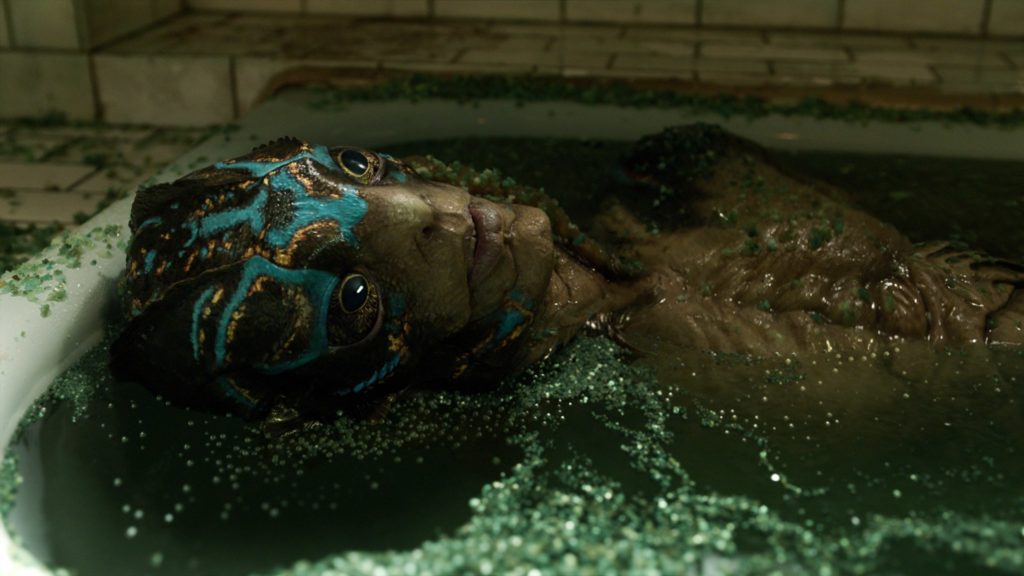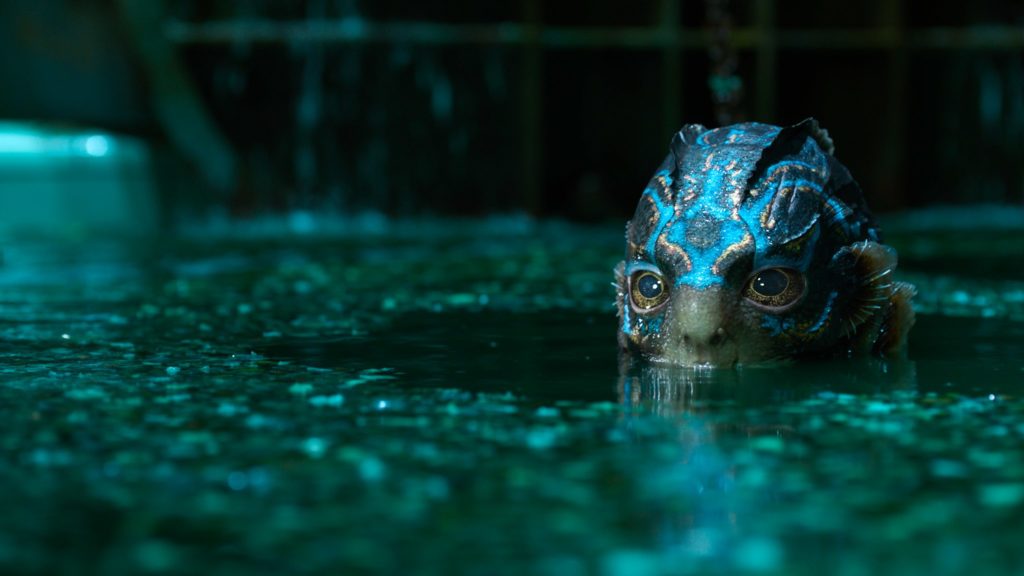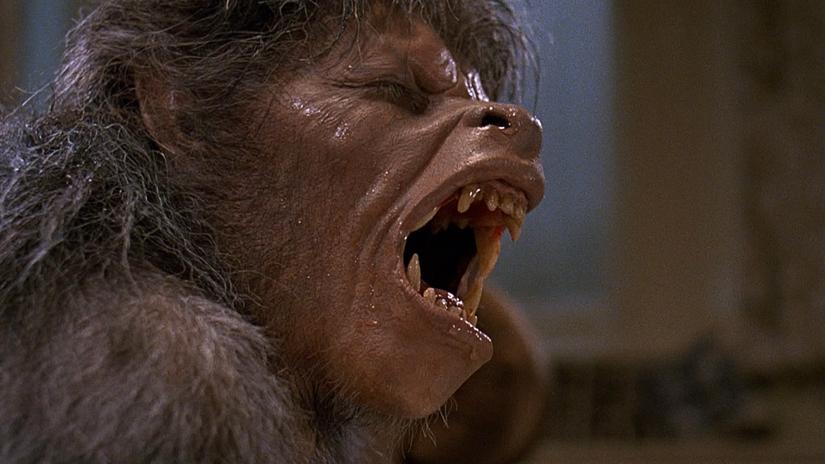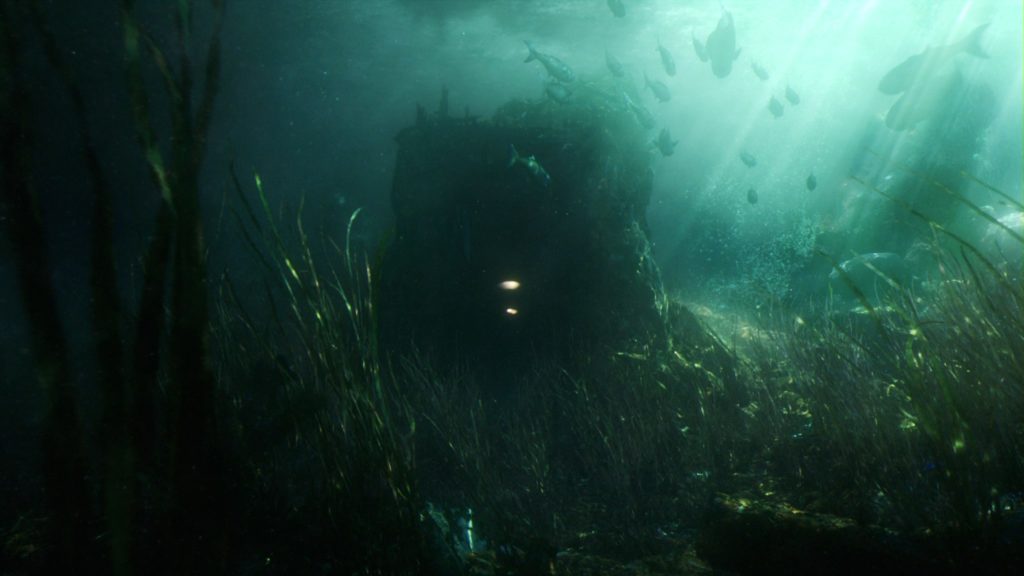
Feature photo provided by Mr. X / Fox Searchlight Films
Some of the most incredible parts of film for me are the special effects that go into it. In this day and age, they’ve developed so spectacularly that sometimes it’s worth seeing a film solely for what the SFX teams manage to do even when a film may not stand out in other ways– they can make it worth seeing on the big screen. A great team of people working behind-the-scenes is capable of making or breaking a movie.
I had the chance to speak with Trey Harrell recently about his phenomenal work, including his most recent job as the Digital Effects Supervisor on Guillermo del Toro’s The Shape of Water. Harrell’s resume is beyond impressive with him having worked on other films such as Tron: Legacy, Crimson Peak, Hanna, Penny Dreadful, and more, and you can learn more about his work on all of these projects and more in our interview below:
You work with the outstanding team at Mr. X who are responsible for a lot of incredible work on projects such as Vikings, Godless, Penny Dreadful, Resident Evil and of course many of Guillermo del Toro’s works including his most recent film, The Shape of Water. For someone passionate about their work, it seems like a dream job– how did you get involved at the studio?
Trey Harrell: Somewhere around eight years ago, there was a bit of a downturn in the advertising industry in Florida, where I’d been employed at various agencies or freelancing for many years. Coming from a small market, I’d made a bit of a career around learning how to do things that nobody in town (or in the southeast) knew how to do at the time: CG animation and visual effects for commercials and indie features were a bit of a hobby, along with some enterprise-level application, linux server, web development and database design experience I’d had.
When the slump happened, layoffs created a glut of new one and two-person boutiques that were all undercutting each other on price and time. I decided to test the waters in feature film VFX, and a small shop in Toronto (Mr. X, about a hundred people at the time) asked me to come up to work on Tron: Legacy for what was to be a short six-month contract.
By the end of the project I had put every single one of my random collection of skills to work, from modeling to lighting to texture painting to programming custom artist tools and team management. By the end of my second year, I was supervising the lighting & look development department, in love with the studio and Toronto. I decided to plant roots.
I’m now an overall Visual Effects (VFX) Supervisor, managing my own shows and the studio has grown to a crew of around 400 now in Toronto, with satellite studios in New York, L.A., Montreal and Bangalore.

You were the DFX Supervisor for The Shape of Water, but for those who aren’t familiar with what that entails, can you tell us a little bit about your role on the film and within the studio at Mr. X?
TH: The role of Digital Effects Supervisor is somewhat different every time, at every studio, depending on a project’s needs. For The Shape of Water, I acted as the technical supervisor for all disciplines of artists, determining how we would approach each shot, as well as in-studio VFX Supervisor when the project’s overall VFX Supervisor, Dennis Berardi, was on-set or unavailable. This would entail review and direction of shots in progress: animation, lighting and final composites as well as overall creative direction to help achieve Guillermo del Toro’s vision for the creature and world. I was responsible for the final methodologies and look for the Amphibian Man’s facial performance/suit augmentation as well as the look of the underwater sequences in particular. For Water I also oversaw on-set 3D scanning of Doug Jones, both in and out of costume, and supervised some pickup shots on-set a few months after principal photography wrapped.
I also simulated and animated the strand of cat spaghetti because over-the-top gore is one of my favorite things in the world. I still like to get my hands dirty on a shot or two on every project, just to keep my skills from getting rusty.

I was reading about Mr. X’s work on The Shape of Water and was fascinated by everything that went into making Doug Jones’ character as amazing as he was from the suit that your SFX crew made to the enhancements that were made through CGI. From your perspective and within your role, what were some of the challenges you faced while working on the film?
TH: Guillermo had worked with a team developing the design of the creature’s practical suit for almost four years before the project was green-lit. By the time we came on board, he knew the creature as well as if it was his child. There were two versions of the suit on-set that would fit differently each day, the paint would need daily refresh when it was in contact with water, and it moved differently than human skin and would show wear quickly if an extreme range of motion happened on any given day.
It was a treat working with Doug Jones again — we’d done similar prosthetic augmentation with him on The Strain and Crimson Peak. He’s an incredibly accomplished actor and mime, but there’s only so much he can do through an inch of foam latex on his face. We scanned Doug out of costume performing a wide range of emotions to guide the creature’s facial performance and keep ourselves within a plausible range of motion. In fact, we built a digital Doug animation rig to compare the creature against and help our animators keep the performance as naturalistic as possible.
Making a consistent version of the creature’s face that didn’t affect the audience’s suspension of disbelief at all was a monumental challenge. A lot of blood, sweat and tears went into just making certain he was absolutely “on-model” in every single shot in the film. It took some time for us to get to know the creature as well as Guillermo and simply be able to tell if his facial tracks and shape were perfect — not for the way the suit was fitting or how the paint looked in any given take, but for the essence of the character himself. All of this was before facial animation began. We’d then move to eye and brow performance, and most commonly animate his brow to upper lip. A handful of shots in the film consist of only eye performance, and another handful were entirely CG.
Once animation was completed, we would go back in and do fine re-fitting of the digital prosthetic so that it moved plausibly like the practical suit in most shots. In a small handful of shots, such as the infamous cat scene or when he’s suffocating in the bath tub we’d go a much bigger than the suit’s plausible range of motion as punctuation. Many times in these more heightened beats, we’d replace more of him with CG.
We spent considerable effort disguising the seams between the practical suit and the CG in different places in every shot. I didn’t want the audience to know where to look — there’s a charm to practical effects and a decidedly classic musical aesthetic to this film, and overwrought CG that called attention to itself would have stuck out sorely.
In addition to the creature, we did a lot of fairly invisible work — substituting Baltimore for Toronto, digitally wrecking a priceless antique Cadillac, and replacing Sally Hawkins’ hair when she’s under water among many other things.

What makes the work at the studio so singular? How does your team and the other teams you work in conjunction with attract such incredible projects to work on?
TH: We’re a small, scrappy team that really enjoys working from the script stage — it’s still fairly uncommon in the industry for filmmakers to bring in the VFX team during development. We’ve developed our relationship with del Toro over Mama, Pacific Rim, The Strain, Crimson Peak and now The Shape of Water and have a wonderful working relationship with him. We know how his eye works, what he loves and what he doesn’t like so much. That sort of relationship doesn’t happen often in big features were price and timeline are generally the major factors. It also helps that he lives in Toronto, and we can call him to come over to the studio and look at anything at a moment’s notice. Many of our best clients are relationships established over the years — we grow along with filmmakers who push us into new territory all the time.
Simply, we geek out on story and the craft of filmmaking first. I believe strongly that spectacle has to make you feel something to be effective… otherwise we’re in Macbeth territory with “sound and fury, signifying nothing.”
I’m in awe of both the homegrown talent and the caliber of filmmakers being drawn to Toronto in recent years, both on-set and in all aspects of post production. Seeing the passion and raw skill these artists and craftsmen bring to their jobs every day is humbling.

I feel like it’s a safe assumption to make that you’re a big fan of cinema. What sort of films and projects inspired you to work in the industry? What specifically drew you to DFX?
TH: Guilty as charged, I’m a giant nerd. As a child of the 80s I’m just going to get the obvious ones out of the way: The Empire Strikes Back, Clash of the Titans, American Werewolf in London and Star Trek II: The Wrath of Khan made a huge impression on me as a kid. I started buying Cinefex magazine and Fangoria and learning how those guys did everything. A lot of kids want to be astronauts when they grow up — well, I wanted to be some combination of Ray Harryhausen, Rick Baker and Phil Tippet.
I spent years going through my local video store’s horror/sci-fi section in alphabetical order for five or six tapes a weekend.
By my teens I started dabbling in practical prosthetics and effects, buying Michael Westmore’s books and magazine features on his work for Star Trek: The Next Generation and Deep Space Nine.
I’ve got a serious soft spot for classic kaiju films — Godzilla, Gamera, Mothra… campy fun like Flash Gordon, an entire category of “dystopia” that Metropolis, Brazil, Blade Runner and Dark City fit into. I also really enjoy the intersection of horror/comedy where the gore goes spectacularly over the top like Return of the Living Dead Part II and the Evil Deads… even Shallow Grave, Gremlins and Eight Legged Freaks fit loosely in this category. There’s something to this day I love about a film giving me permission to laugh at outrageous gore and guys in rubber suits. There’s something about that shared experience that’s at the very core of why I love seeing films with a crowd. I try to catch as much as I can at TIFF’s Midnight Madness every year — that’s the best crowd to see a movie with in the entire world.
There’s so many more: I love 90s Hong Kong cinema… from Heroic Trio to The Bride With White Hair. In The Mood For Love was hugely influential for me in terms of really needing to learn how filmic composition, color and cameras work. But really, to answer the original question, my fate was sealed as a kid once I learned how to unscramble HBO and Cinemax.

What are some of your favourite projects that you’ve worked on? What makes them special to you?
TH: I absolutely loved working on and seeing Hanna. Such a hypnotic, kinetic film, and almost everything we did on that was completely invisible.
I’ve got a soft spot for The Strain — being able to supervise and design creatures / icky things in Guillermo’s sandbox within his aesthetic and take them utterly over the top brought out my inner 10-year-old. One of the proudest moments in my life was going too big on a gore effect for GDT and him asking me to tone it down.
Making digital prosthetics that blend perfectly with practical makeup and appliances is my jam and I gotten to do an awful lot of that over my two years CG supervising on that show.
The Hundred Foot Journey was also pretty special for me. Working on a sweet romance and helping make a postcard-perfect French countryside look even more postcard perfect was a treat. Working on monster stuff and gore so often, it’s nice to take a break and work on something your mom or grandmother would like to see from time to time. The same applies for the opening credits for Grace and Frankie, which I designed with a very small crew. We all got to contribute a disproportionate amount of creative input for that one… and throw multiple wedding cakes off a balcony — for science.
Were there any other areas of the film industry that you contemplated (or still contemplate) dabbling in? And are there areas that you have dabbled in that you enjoyed (or didn’t) and decided to move away from?
TH: I’m spending much more time on-set these days and am flexing new muscles daily. I really enjoy doing final color grading, which I don’t get to do too often, love building robot gear to do stuff for VFX that can’t be bought off the shelf, and hate spreadsheets — but they’re an occupational hazard!
I find that this job is never the same two days in a row, and it’s difficult to get bored.
For you, what’s the best and worst parts of what you do?
TH: There are still days when I wake up and can’t believe I’ve made a career out of playing with monsters for a living.
The hours required and deadline pressure are pretty tough in any production business — it’s not exclusive to filmmaking. It takes a certain personality type who’s in it for the long haul to be happy, I think, but there are tradeoffs in how available you are for friends and family at a moment’s notice during the last few months of a project.
I can imagine that getting to work with Guillermo del Toro would perhaps be up there with “dream projects”, but are there any films that you wish you could’ve worked on or any projects that you hope someday get made?
TH: I remember seeing Cronos on a first date at a film society screening many, many years ago before it had been officially released in the US. Working for the guy who created Pan’s Labyrinth was the very definition of a dream for me. Anyone who didn’t enjoy Pacific Rim could never possibly have been a seven-year-old kid playing with Godzilla toys in the bathtub.
Anything Denis Villeneuve does is intriguing to me, and the raw potential of his take on Dune sends chills up my spine.
I would have loved to have worked on A Monster Calls. I’ve been a big fan of JA Bayona’s eye and sensibilities since he established the style on Penny Dreadful.
I’d jump at a chance to have dinner or work with with Wong Kar-Wai, Park Chan-wook or Jean-Pierre Jeunet.
Some day I’d love to play in the Star Trek sandbox and put my extensive store of useless trivia and canon to a good use. I have a bat’leth leaning on my desk at work in case auditions come up. True story.
Are there ever moments while watching other people’s films when think “Oh I would’ve done this differently?” Is it ever hard for you to disconnect your work from just enjoying cinema?
TH: All the time. I find if a movie engages me emotionally on any level, I’m prepared to forgive a lot in terms of aesthetics and execution. If it doesn’t, my brain goes into clinical mode purely analyzing the technical aspects of filmmaking, and that’s no fun at all for anyone in my immediate vicinity.
On the flip side, I can marvel and be dazzled by the sheer craft and scale of some films which were executed flawlessly but didn’t connect with me emotionally.
And finally the most important of questions– what goes on your dream pizza?
TH: Shout-out to Moon River Pizza in my hometown of Jacksonville, Florida.
It’s called “The” Pizza, and I want one in my stomach now:
– New York crust
– White cheddar
– Double mushrooms
– Double spinach
– Raw, minced garlic
– Side of Sriracha


![[REVIEW] THE GOSPEL OF LOKI RETELLS NORSE MYTHS](https://geekd-out.com/wp-content/uploads/2020/05/GOL-header-800h-150x150.jpg)

